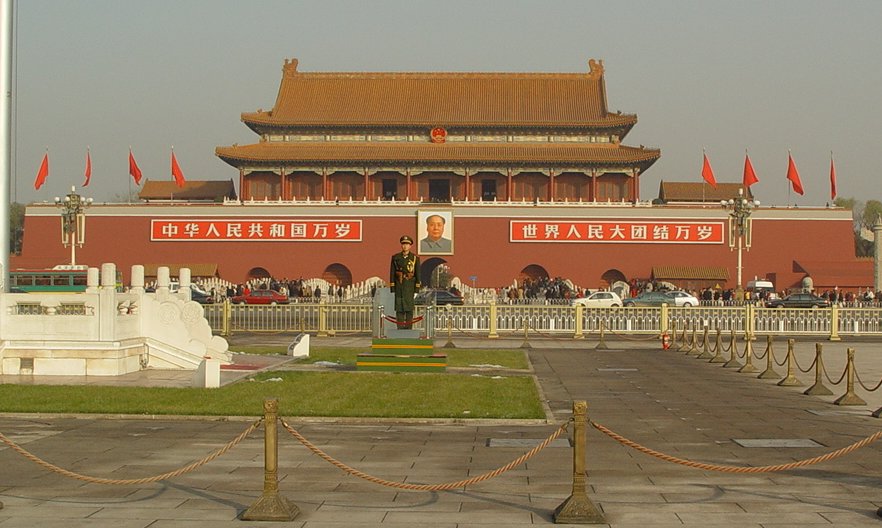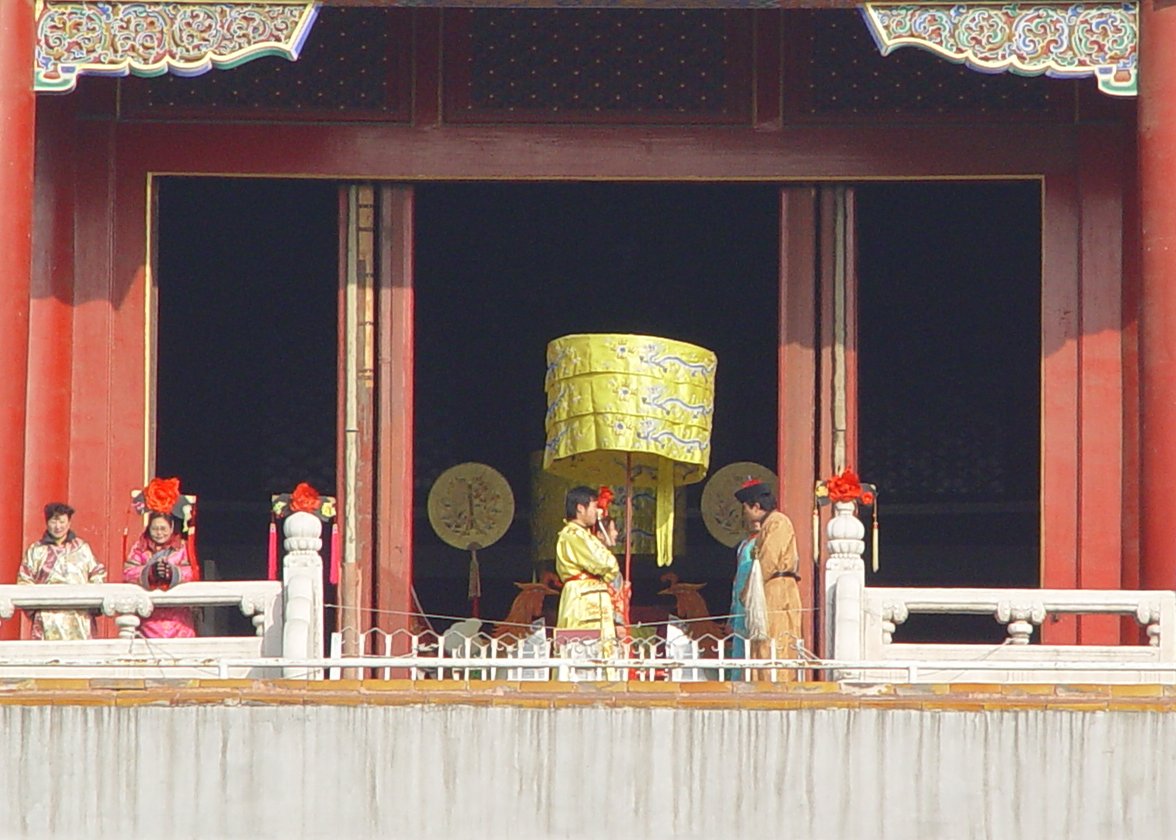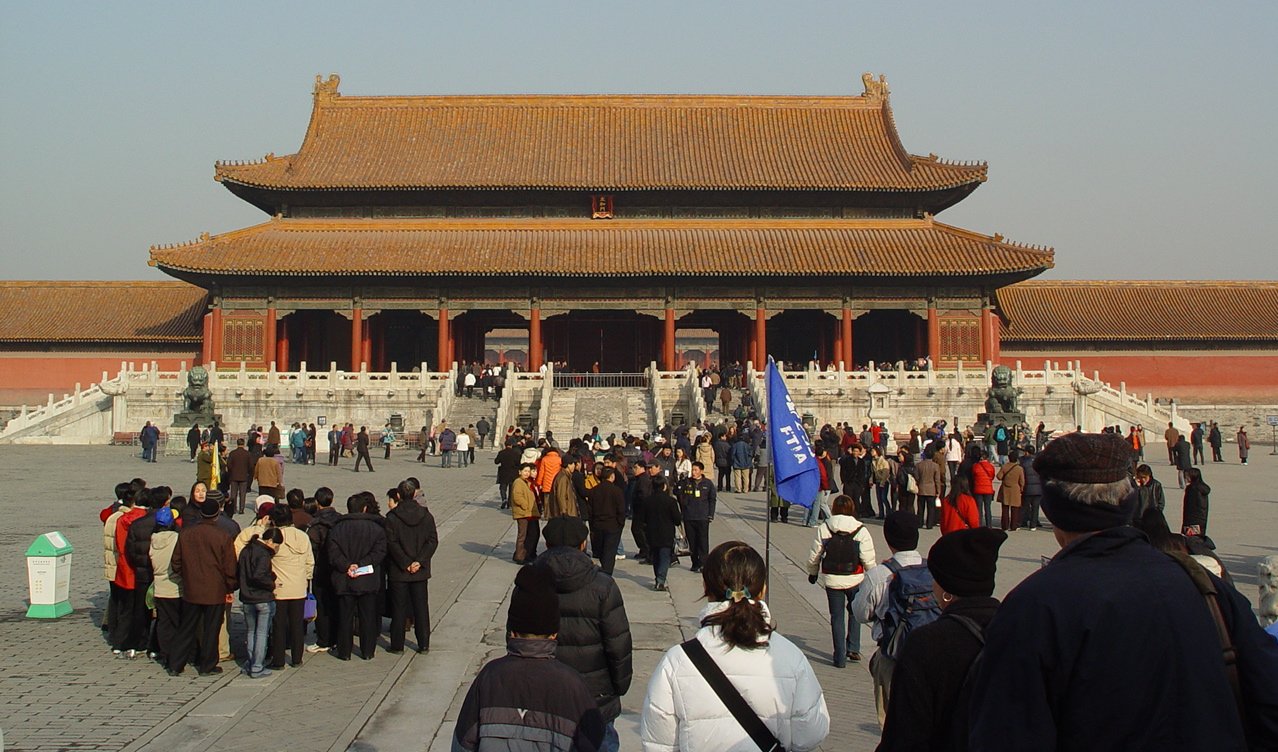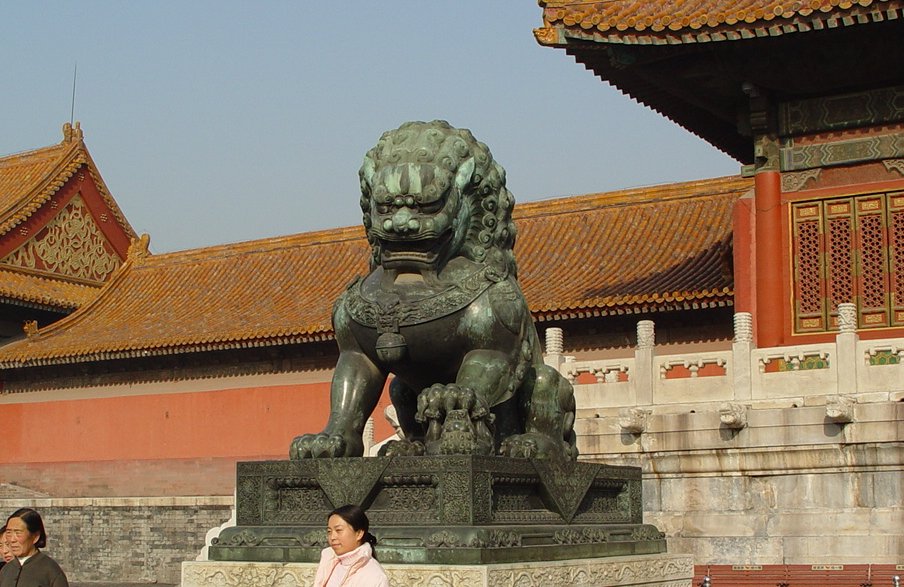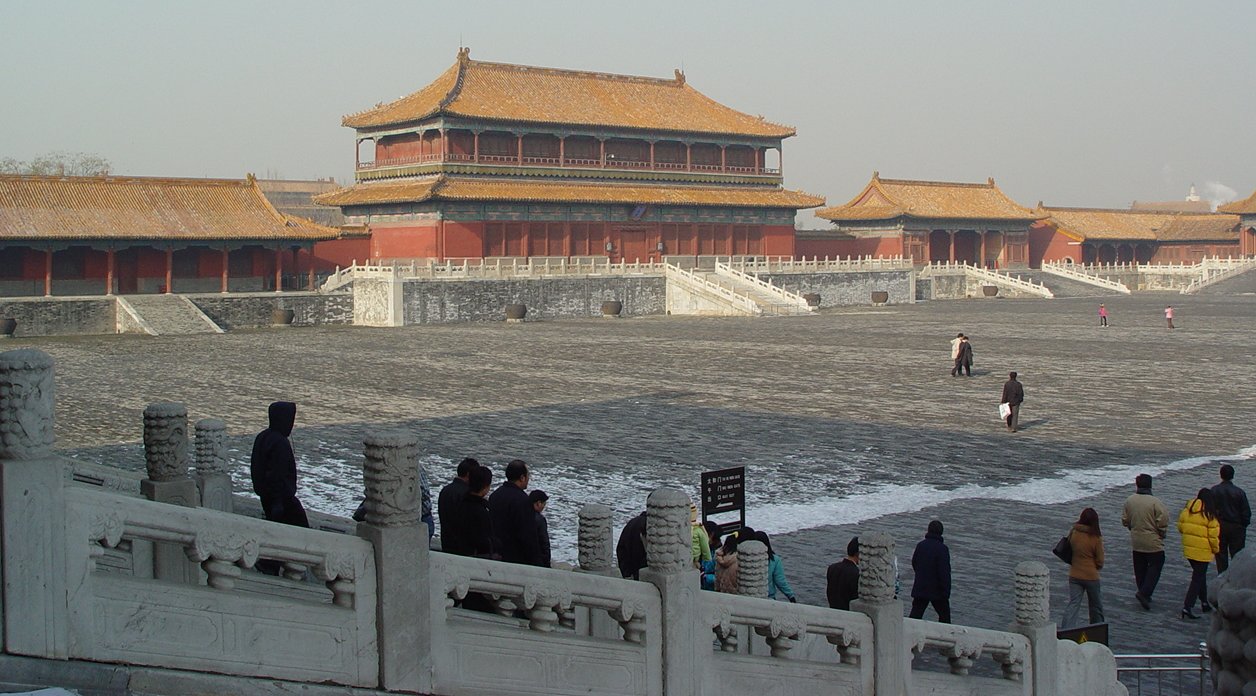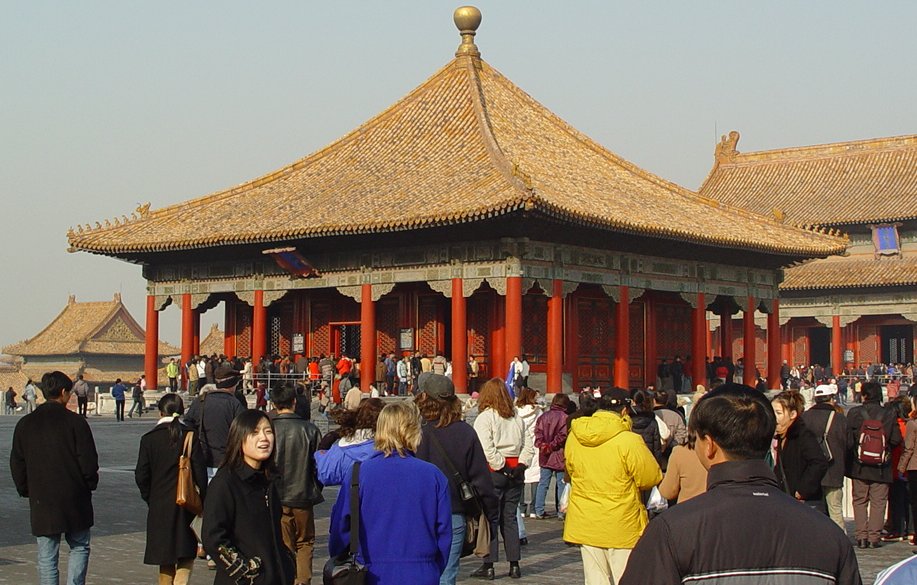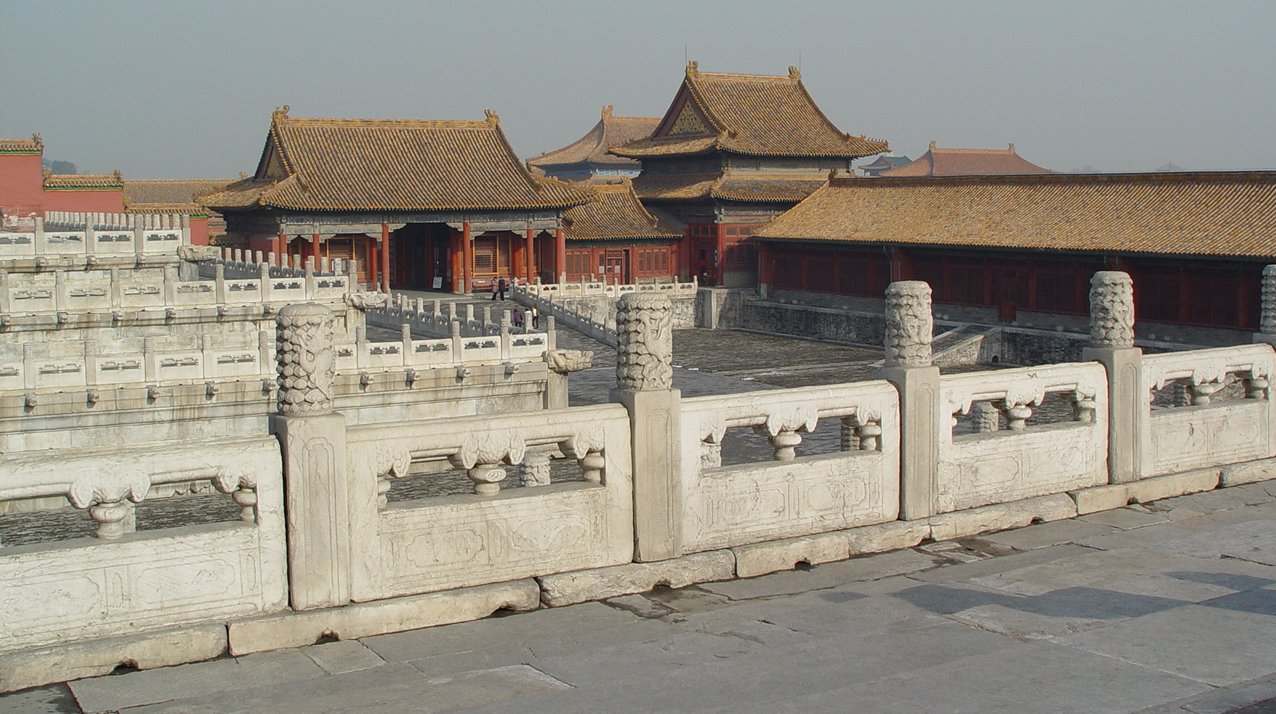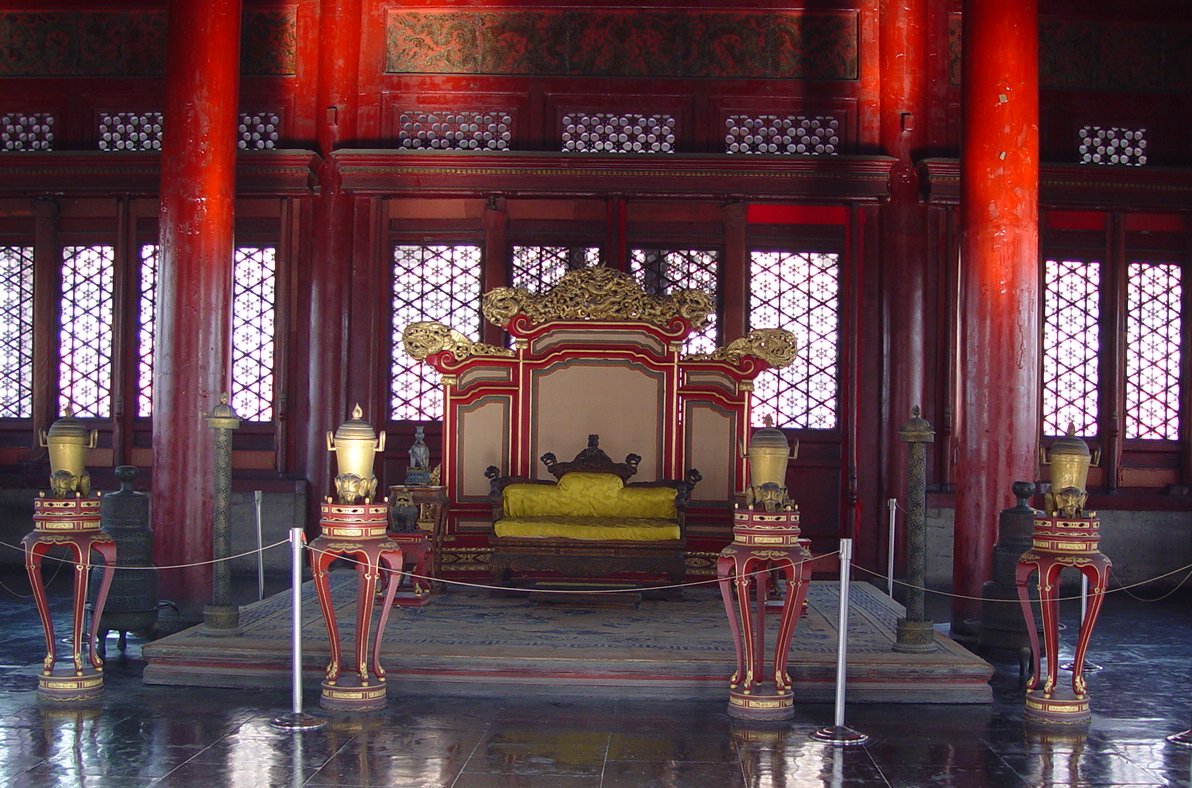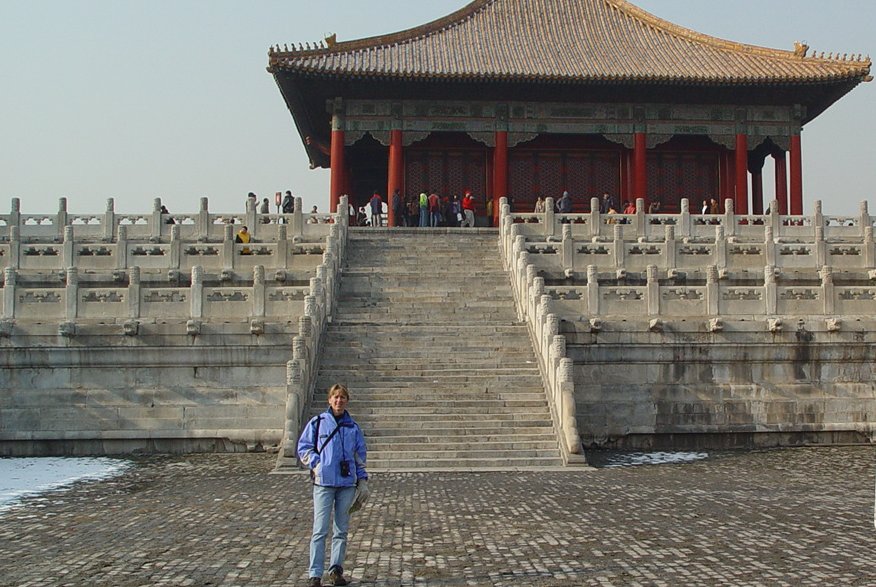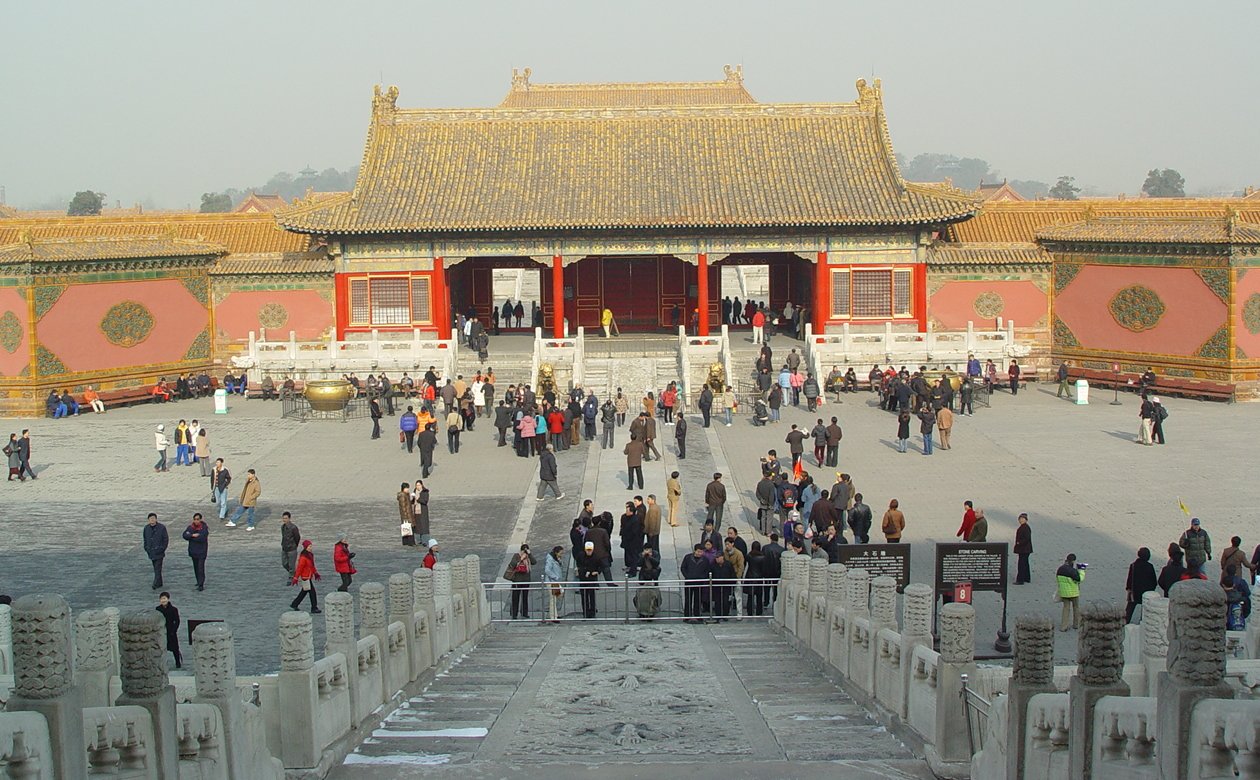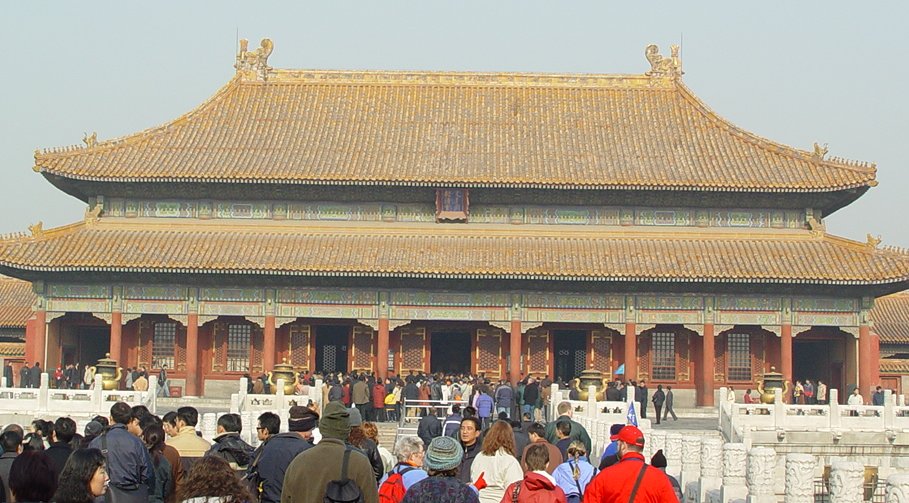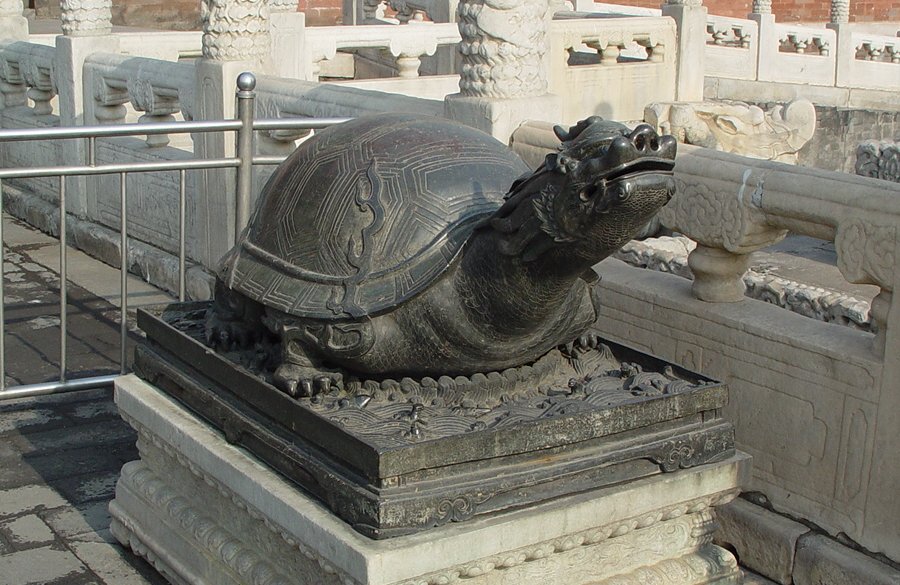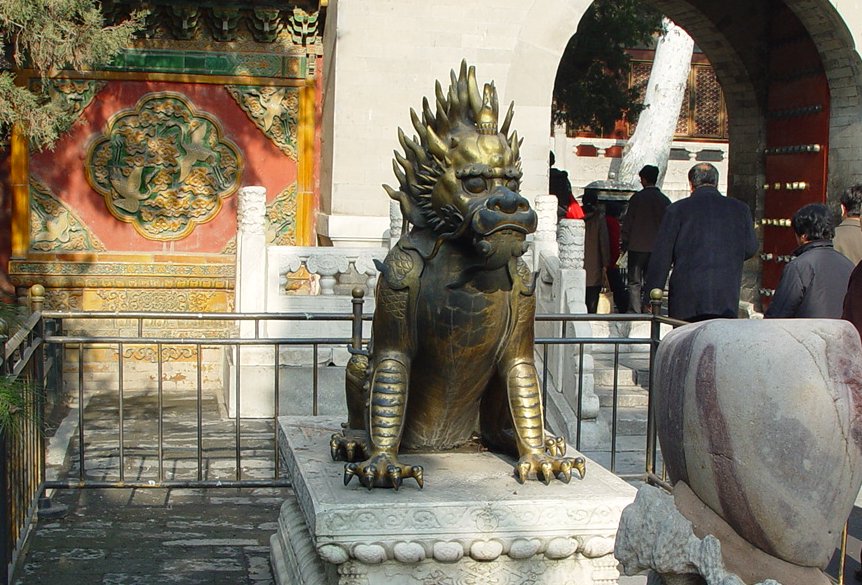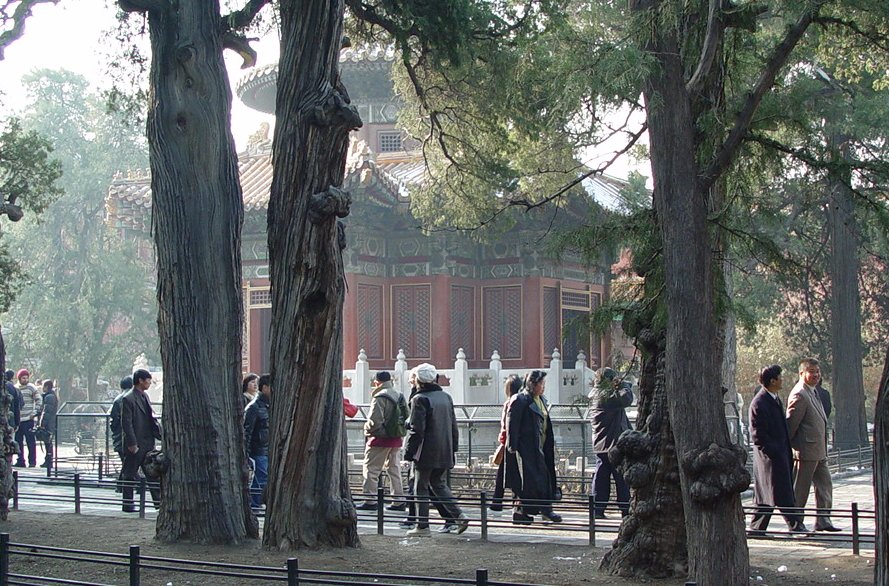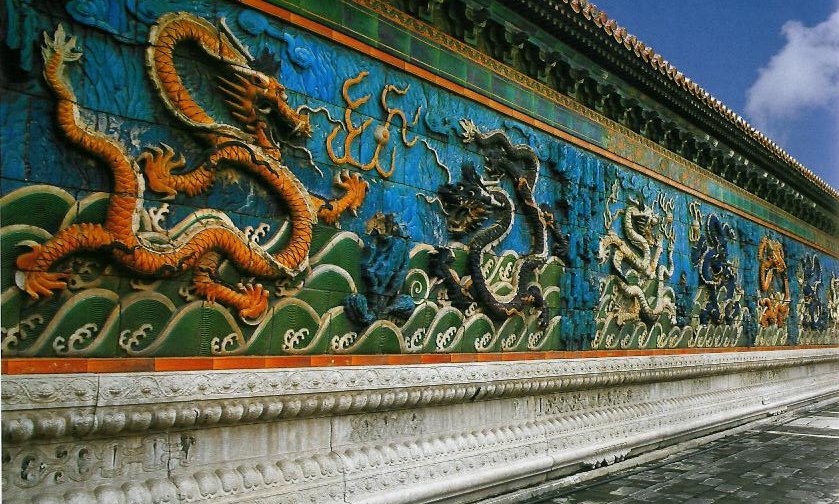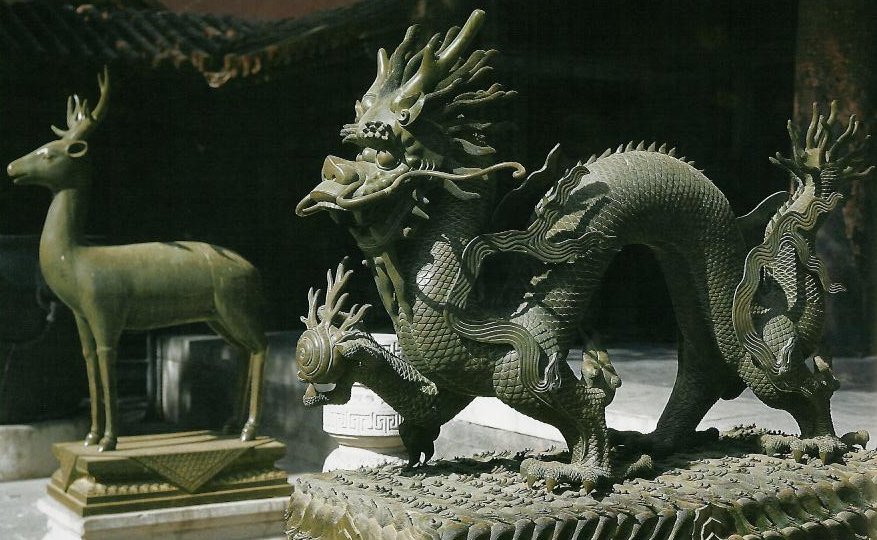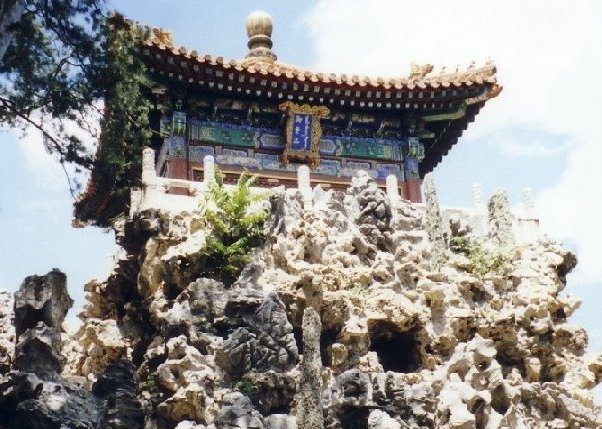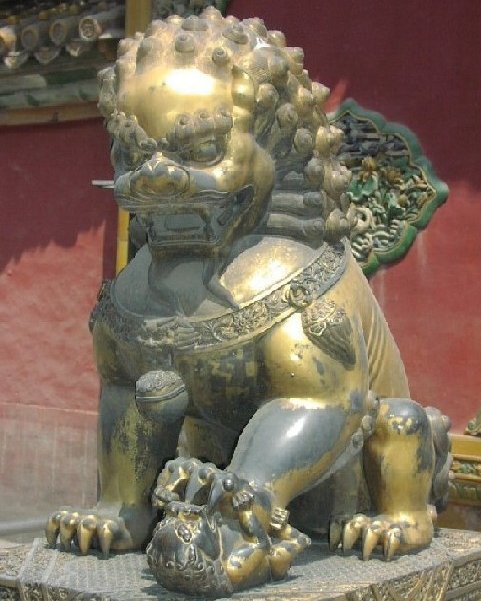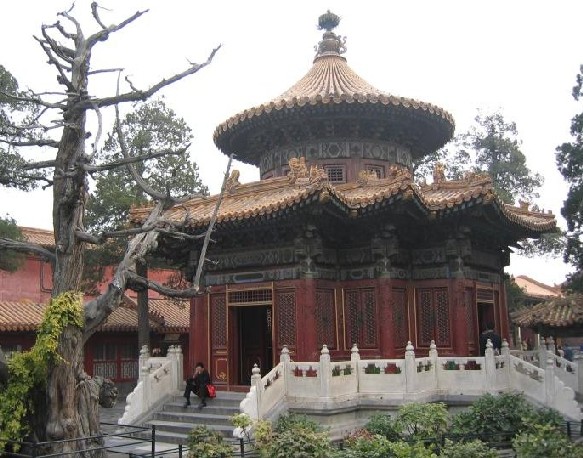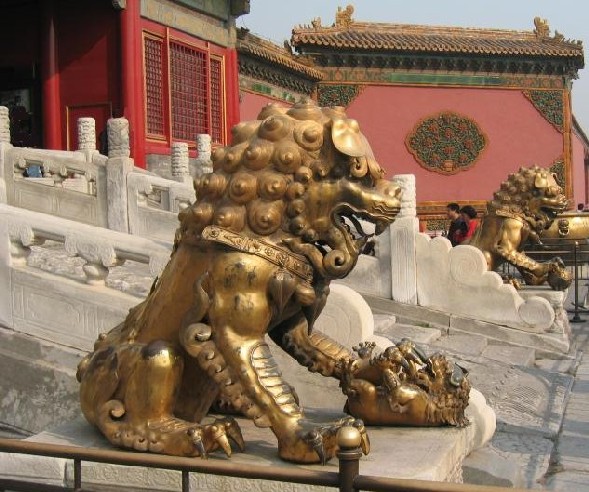The Forbidden City
The yellow tile roofs and vermillion walls of the Forbidden City dominate the center of Beijing. Now known to modern Chinese as the Palace Museum (Gugong). Under the Ming and Qing Dynasties, Beijing was divided into walled sections, the inner most of which was the Forbidden City, the residence of the Emperor. It is surrounded by a moat and a 33 foot high wall with a 3.75 mile perimeter. Entry to the Forbidden City is through the North or South Gates only. Starting at the South Gate, the main structure is made up of two groups of three palaces, one after the other along a central axis called the Meridian Line. At the north end is the Imperial Garden. Alongside the palaces on the northwest are the apartments of the former concubines and on the northeast are the palaces of Emperor Qianlong and Empress Cixi (the Dowager Empress).
The first group of three palaces, the "outer court", were for official functions, the second three, the "inner court", were for private ones. Before reaching the palaces you pass through the Meridian Gate, reserved for the emperor. Beyond the Meridian Gate is a magnificent courtyard through which runs the Golden Water Stream spanned by the five Inner Golden Water Bridges. Tiahemen (Gate of Supreme Harmony) is next, while on the right are buildings that were devoted to Confucian studies and on the left, the Hall of Martial Valor. After Tiahemen is a large courtyard and the three main palaces of the "Outer Court".
The first of these is Taihedian (Hall of Supreme Harmony), once the tallest building in Beijing. The marble ramp leading up the terrace was for the sole use of the emperor. Next comes Zhonghedian (Hall of Middle Harmony), followed by Baohedian (Hall of Preserving Harmony). The next structure is Qianqingmen (Gate of Heavenly Purity), the gateway to the "Inner Court" protected by two huge gilded lions. Beyond is the Qianqinggong (Palace of Heavenly Purity), where the emperor slept. Behind this is the Jiataidian (Hall of Heavenly and Terrestial Union). The last structure in this line is the Kunninggong (Palace of Terrestial Tranquility), symbol of the earth, the empress' bedroom, and under the Qing, the emperor's bridal chamber. Just inside the North Gate, Gate of Divine Prowess, is the Imperial Garden. Surrounding the six palaces on the east and west are other lesser buildings that now house collections of imperial significance.
Tiananmen Gate, the outermost gate to the Forbidden City, seen from Tiananmen Square
The Meridian Gate, gateway to the "Outer Court"
Imperial costumed entourage on balcony of the Meridian Gate
Taihemen Gate
Buildings on the sides of the courtyard in front of Taihemen Gate
One of two bronze Foo Lions at Taihemen Gate
Taihedian Hall
The Hall of Martial Valor
Zhonghedian Hall
Buildings along the side of the "Inner Court"
Interior of Zhonghedian Hall
Jana standing in the side courtyard below Zhonghedian Hall
Qianqingmen Gate seen from the back of Zhonghedian Hall
Interior of Qianqingong Hall
Kunninggong Hall
Hall interior
Bronze Turtle
Gilded Lion
Zoomorphic Ornaments on Forbidden City building roof. The largest number of zoomorphic ornaments are found on Taihedian Hall. Leading the flock is a god riding a Phoenix, after which comes a dragon, a phoenix, a lion, a heavenly horse, a sea horse and five other mythological animals. The largest figure is called a Chiwen, it has the tail of a fish and appears ready to devour the entire line of figures. It is also known as Tunjishou, or ridge devouring beast. The more important the building, the more figures are present.
Imperial garden
Imperial garden entrance
Pebble pattern set in the pavement of a pathway in the Imperial Garden
View north out of the North Gate
Nine Dragon Screen, a wall facing the Huangji Gate
Bronze dragon and stag in Chuxiu Hall
Carved marble gargoyle
Court Yard of Fresh Fragrance
Imperial Garden
Gilded Foo Dog or Foo Lion, female with pup under paw, the male always had a ball, symbolizing the world, under his paw
Female Foo Dog foreground, Male Foo Dog in background
